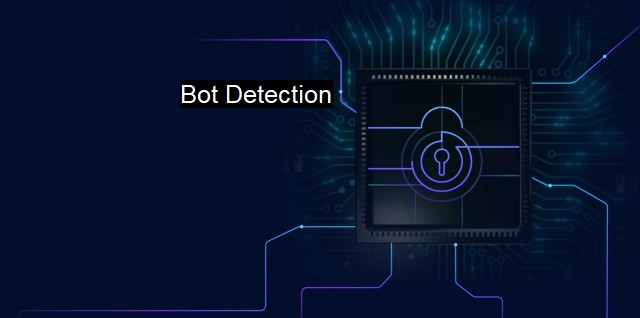What is Bot Detection?
Identifying the Invisible Threat: Exploring Bot Detection Techniques for Cybersecurity and Antivirus Applications
In the realm of cybersecurity and antivirus solutions, "bot detection" represents an essential component. Bot detection refers to software and processes specifically designed to identify and thwart efforts by "bots" to infiltrate computer systems or networks. A bot, or internet bot, is essentially a software application programmed to execute automated tasks over the Internet. These tasks often take place at a much higher rate than a human could accomplish them, and can range from legitimate to malicious activities.The legitimate use of bots include well-known forms such as web crawlers used by search engines to index the web and provide more accurate search results. automated bots can also be used for less beneficial purposes such as cyberattacks, spamming or phishing emails, network probing, server overload attempts, or to spread fake news or misinformation.
For this reason, bot detection plays a critical role warding off baleful online behavior, and safeguarding personal, commercial, and governmental cyber entities.
Generally, bot detection occurs through a number of established methods. These methods operate on the principles of endpoint security, behavioral recognition, and rate-based detection.
Endpoint security primarily aims to identify bots by scrutinizing the user agent strings, which offer information about browser type and operating system. such measures can potentially be inaccurate resistant to spoofing, causing potential loopholes.
So, bot detection systems also rely on behavioral recognition, observing behaviors that typically distinguish human activity from automated bots. For instance, a bot typically generates clearly-patterned behaviors, repeated actions with minimal variances, whereas human behaviors demonstrate more randomness.
Rate-based detection identifies the unusual high-speed actions often characteristic of bot attacks. These could be several requests per second from the same IP, or continuous access over much extended periods of time, well beyond ordinary human interaction times.
The earliest bot detection systems were CAPTCHAs (Completely Automated Public Turing tests to tell Computers and Humans Apart). CAPTCHAs require users to solve visual puzzles or enter text from an obscured image, an activity far more intricate for bots to execute accurately.
Flagging frequency and patterns of digital activities are also common methods for detecting bot activities. in response to advancing bot complications, bot detection has begun to incorporate machine learning technologies to detect bots more accurately and effectively.
Machine learning and artificial intelligence can be harnessed to develop learning models that calculate diverse variables such as IP address, device information, geolocation, and event metadata to recognize bots. they are designed to continually evolve in response to emerging and more incursive bots, making them a vital tool in the fight against malicious bots.
Bot detection is an integral part of cybersecurity and antivirus domain. It aims to detect, deter, and neutralize the threat from internet bots that carry out automated tasks potentially causing harm to personal, commercial, or governmental bodies. From basic CAPTCHA systems to advanced machine learning algorithms, bot detection methods are continuously developing to maintain pace with the increased sophistication of cyber threats. This continuous innovation acts as a safeguard, promising a secure digital environment in an era symbolized by information exchange and interconnectivity.

Bot Detection FAQs
What is bot detection?
Bot detection is the process of identifying and flagging automated programs (bots) that are attempting to gain unauthorized access to a network or perform malicious activities on a system. It is an important aspect of cybersecurity and antivirus protection.Why is bot detection important?
Bot detection is important because bots can be used by cybercriminals to carry out various types of malicious activities, such as stealing data, initiating a DDoS attack, or spreading malware. Effective bot detection is necessary to prevent these attacks and protect against cyber threats.How does bot detection work?
Bot detection works by analyzing data and activity on a network or system to identify patterns that are consistent with bot behavior. This may include analyzing IP addresses, user-agent strings, page request timings, and other factors. Advanced machine learning and AI algorithms are often used to improve the accuracy and speed of bot detection systems.What are some common techniques used for bot detection?
Some common techniques used for bot detection include signature-based detection, which involves identifying known patterns of bot activity, and behavior-based detection, which involves analyzing network traffic and user behavior to detect suspicious activity. Captcha tests and IP blacklisting are also commonly used to prevent bots from accessing networks or systems.| | A | | | B | | | C | | | D | | | E | | | F | | | G | | | H | | | I | | | J | | | K | | | L | | | M | |
| | N | | | O | | | P | | | Q | | | R | | | S | | | T | | | U | | | V | | | W | | | X | | | Y | | | Z | |
| | 1 | | | 2 | | | 3 | | | 4 | | | 7 | | | 8 | | |||||||